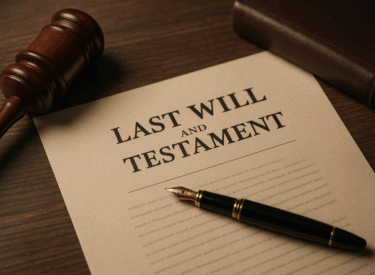The cost-of-living crisis has been well documented. It’s clear that prices for various goods and services have risen sharply over the past four years since the pandemic started.
Firstly, if you’re spending more on day-to-day expenses, it’s likely you have less to put towards investments, especially if your income hasn’t increased much during this time. This can significantly impact your ability to save for retirement.
Secondly, because maintaining your standard of living has become more expensive, you’ll need a greater amount of wealth by the time you reach retirement, compared to what would have been necessary before the pandemic.
What steps should you take to combat this?
Rise in the cost of living is more than inflation
Since the beginning of 2020, the general inflation measure has increased by 17.6%. It’s expected to surpass 18.5% with the upcoming June 2024 quarter data to be released at the end of this month – let’s call it 20%.
However, many expenses have increased by more than 20% since the pandemic’s onset.
For example, I have observed that prices for many supermarket items have doubled during this period.
For instance, the sandwich that I buy daily used to cost $6.00. It now costs $9.40 – an increase of more than 50%.
Factors such as reduced traffic (due to WFH), higher ingredient costs, and wages likely forced this sandwich shop to hike prices.
I doubt they are profiteering.
To cope with these rising prices, many people have had to adjust their shopping habits.
Team members in my office have said that they buy in bulk during sales, shop more online, and/or opt for cheaper brands or substitute products to maintain their grocery budget.
However, it’s impossible to completely evade these cost increases, especially for essential expenses like energy, insurance, and mortgages.
Everyone’s circumstances are different, but most of us have probably felt a roughly 20% increase in the cost of living since the pandemic began.
For example, if your annual general expenses were $100,000 pre-pandemic, maintaining the same standard of living today likely costs around $120,000 annually.
Impact # 1: Potentially less surplus investable cash flow
Since the beginning of 2020, the Wage Price Index has risen by 11.2%, nearly half the rate of increase seen in goods and services inflation.
Of course, some sectors and occupations have experienced higher wage increases.
However, many individuals might find that their surplus cash flow available for investment – critical for building retirement savings – has decreased compared to pre-pandemic levels.
It is important to acknowledge that the significant rise in interest rates, alongside the escalating cost of living, has played a substantial role in reducing cash flow too.
Having less to invest each month potentially translates to lower retirement funds, which could mean you may not be able to maintain the same standard of living into retirement.
Impact # 2: Need more wealth to maintain standard of living
If it costs more to maintain your standard of living, it means you’ll require a larger asset base by the time you reach retirement age.
For instance, using the above example where a $100,000 p.a. standard of living now costs $120,000 p.a. if you plan to retire at age 60 and aim to have enough money in case you live to at least age 95 (although spending 30% less after age 80), you’ll need an additional $400,000 in retirement savings in today’s dollars ($2.05 million versus $2.45 million).
In other words, you’ll need roughly 20% more in retirement assets to maintain your current standard of living.
Spending is invisible – make it visible
Blogger extraordinaire, Seth wrote recently, “We’re not very good at paying attention to invisible or gradual outputs. The trick is simple: If it’s important, make it visible”.
The truth is much of our spending is invisible.
Numerous small transactions and automatic direct debits go unnoticed.
To effectively manage cash flow, I make it visible by categorising my family’s expenses into eight categories each month – a practice I’ve maintained for many years, requiring just half an hour of my time.
My advice is to focus on categories where overspending is likely, such as wine for me, apparel shopping for my wife, and dining out for both of us.
We also separately account for expenses like gifts and holidays.
All other expenses (excluding investments) are classified into either discretionary or non-discretionary categories.
Since it’s harder to overspend on non-discretionary items, our aim is to keep discretionary spending within an annual budget.
This method isn’t time-consuming, but it gives us valuable information and makes our spending visible and easier to manage.
If your spending is invisible, it will be impossible to manage.
Small sacrifices now, avoid big ones later
Failing to invest adequately before retirement could force significant compromises on your lifestyle during this phase.
However, making modest sacrifices now could potentially eliminate the need for any sacrifices in retirement.
A bit of discomfort today could prevent much tougher decisions later.
The consequences of spending choices are inevitable; they can only be postponed.
Therefore, to preserve your ability to invest, it may be necessary to streamline your spending on living expenses.
Maybe you need to take more risk?
If you’re concerned about not accumulating enough wealth by retirement age, you might consider taking on more investment risk, which can be approached in two ways.
Firstly, allocate more of your assets to growth investments like shares, as I discussed recently in a recent blog.
Although this strategy typically entails higher volatility, over the long term, it should enhance investment returns.
Secondly, leveraging or borrowing to invest can amplify your investment returns.
Based on my analysis, borrowing to invest in high-quality property, for example, could potentially yield an after-tax return exceeding 13% p.a. if you hold the property for at least a couple of decades. Nearly half of this return stems from leveraging, not the property itself.
Begin with the end in mind
One of Dr Stephen Covey’s “7 Habits of Highly Effective People” was that they ‘begin with the end in mind’.
Applying this principle to financial planning involves first determining the amount of wealth required for a comfortable retirement.
Next, you must devise a strategy to close the gap between your current wealth and the calculated retirement goal.
Having a well-defined plan gives you comfort that you are safely progressing towards a secure retirement, despite the cost-of-living increases.


















